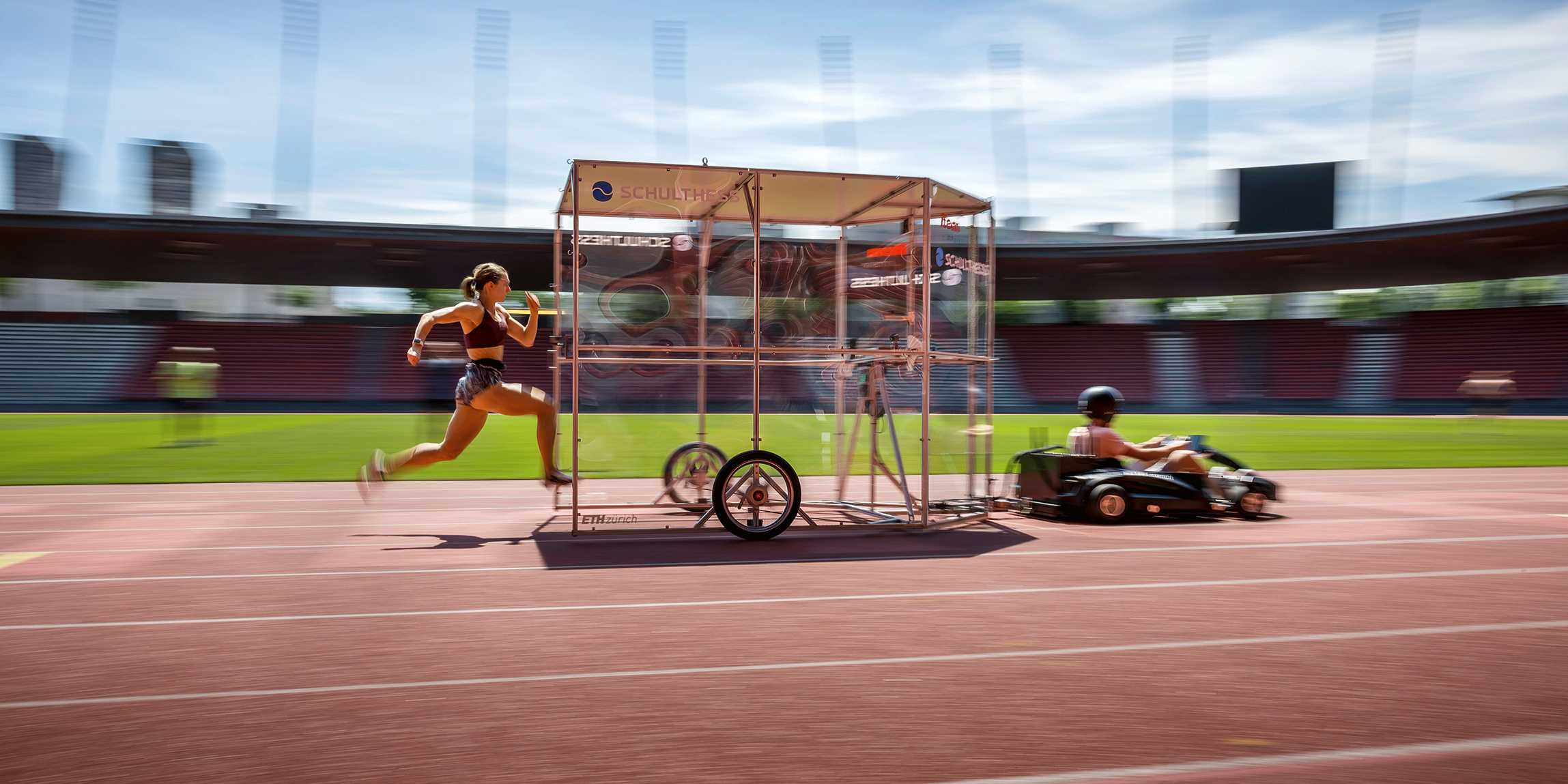
ETH student and top sprinter Géraldine Frey is preparing for her races with an innovative piece of equipment. Developed at ETH Zurich, the Airshield reduces aerodynamic drag, enabling athletes to train at speeds above their normal pace.
The sun blazes down, driving beads of sweat onto Géraldine Frey's forehead. With only a few seconds to go, she takes up her mark and slowly raises a hand to signal her readiness. Face tense with concentration, she waits for the green light, then launches herself along the track.
The silence in the arena is deafening, the stands empty. On this hot June day, the Letzigrund Stadium is hosting a different kind of meeting: a coming together of science and sport. Frey is part of a team testing an innovative piece of training equipment developed at ETH Zurich: a wheeled, wedge-shaped trailer with a Perspex body, towed by an electric go-kart. When running in the shelter of this "Airshield", an athlete experiences reduced wind resistance, allowing them to sprint faster than normal - an athletic technique called overspeed training.
Globe A world without barriers
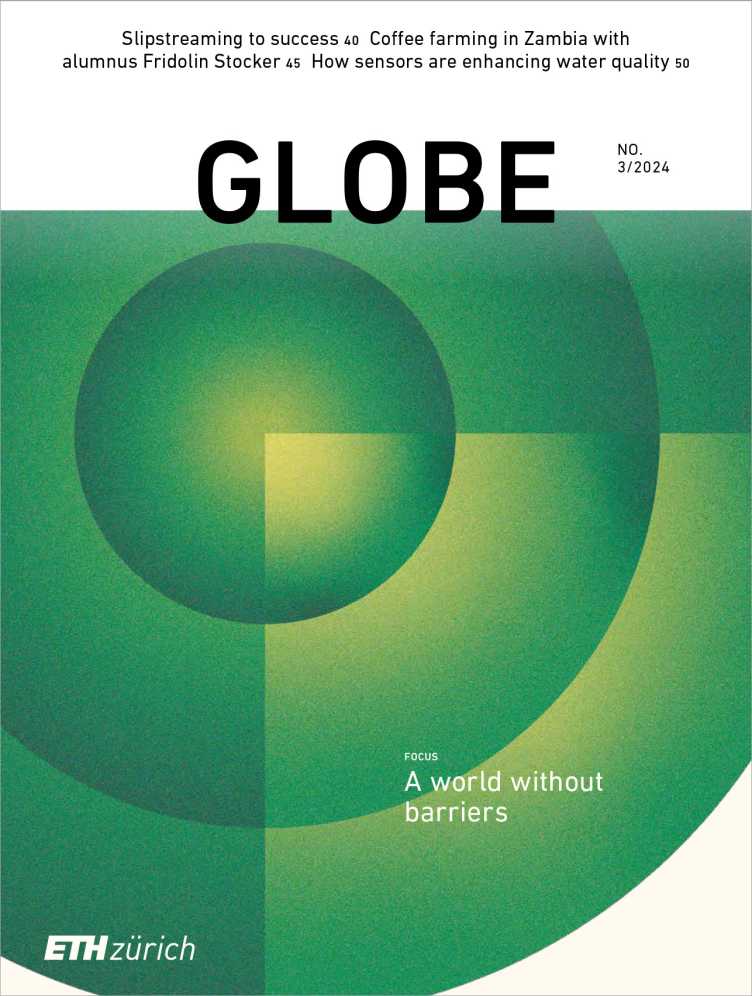
This text appeared in the 24/03 issue of the ETH magazine Globe.
Pushing the limits
Good weather has finally allowed the team to return to the arena. At the athletes' request, the Airshield is optimised for use in warm, dry conditions - and today is perfect. "We've been caught out by the rain a few times," Frey explains. "So it's great to be out on the track again." Time is running out in her race to prepare for the 2024 Summer Olympics in Paris. For the past three years, her eyes have been firmly fixed on this prize. "My goal is to peak in Paris," says the 27-year-old sprinter. "And for that, I'm willing to try out anything that might give me a few extra yards of pace."
Running in the slipstream of the Airshield is a new form of overspeed training - pace drills in which equipment is used to boost tempo and hopefully attain new performance levels. As ever, proper preparation is key, and it will be another few hours before actual training can begin. Project lead Andrea Carron, an ETH researcher, has now arrived at the stadium. His first job is to check that the electric go-kart used to tow the Airshield is fully charged. He then ensures that all the cables are properly connected and the complex technology is fully functional. He is joined by Professor Melanie Zeilinger from the Department of Mechanical and Process Engineering at ETH. Together, they eagerly await the first sprint. "We built the Airshield in a matter of months," Zeilinger explains. "To see athletes already training with it is just fantastic!"
Overspeed training
But what exactly do the researchers hope to achieve? "We want to look at the benefits of overspeed training and how our equipment matches up to other methods," Carron explains. For athletes, speed training is all about optimising and internalising certain muscle movements and then reproducing that peak performance on the competition track. Given that air resistance increases as the square of speed, anything that reduces the aerodynamic drag on a sprinting athlete is going to provide massive assistance. But how does the Airshield compare with another piece of equipment used in overspeed training - an elastic cord attached to the torso, which tows the athlete along the track? Frey much prefers the Airshield, because it enables her to sprint faster than normal while also maintaining her natural running position. Similarly, there is none of the artificial acceleration provided by a cord. Instead, she has to sprint up to maximum speed entirely under her own steam.
-
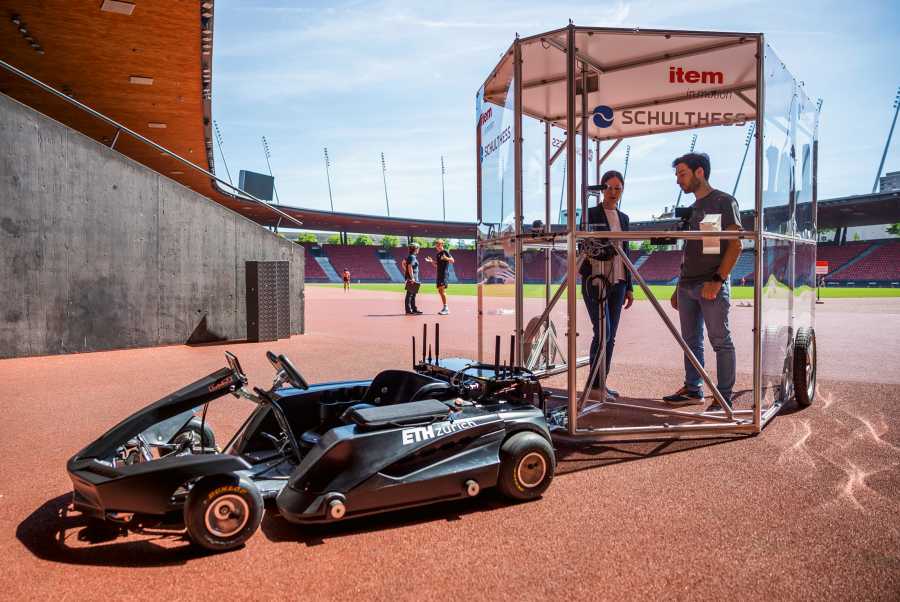
Professor Melanie Zeilinger and project leader Andrea Carron check the camera and sensor in the Airshield. (Image: Alessandro Della Bella / ETH Zürich) -
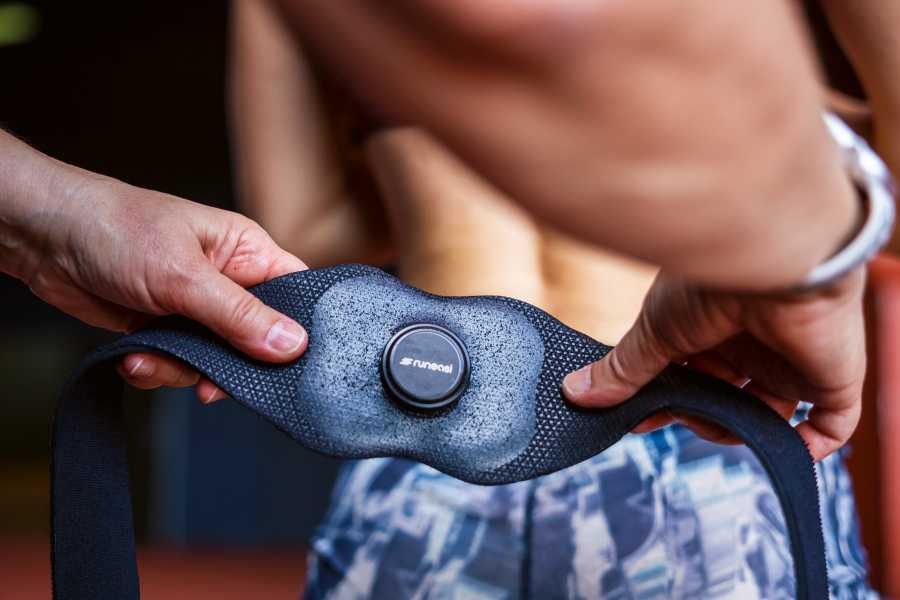
Sensors incorporated in a belt record the athlete's movements. (Image: Alessandro Della Bella / ETH Zürich) -

Professor Christina Spengler prepares special insoles fitted with sensors to measure pressure distribution while running. (Image: Alessandro Della Bella / ETH Zürich)
The current Airshield, complete with go-kart, is a prototype, born of a request from the coaches of the Swiss sprint team, which includes Frey and reigning European champion Mujinga Kambundji. The hope was that ETH Zurich could develop drag-reduction equipment to help top sprinters train and, ideally, improve their performance in competition. The result is a project that brings together science, sport and technology. At its helm are Zeilinger and ETH professor Emilio Frazzoli, who developed the go-kart used to pull the Airshield. Researchers from the Institute for Dynamic Systems and Control at ETH Zurich developed an algorithm that automatically matches the speed of the Airshield to that of the sprinter. A more recent addition to the team is ETH professor Christina Spengler, a health science specialist who is looking at the new training system from the perspective of sports science.
In the stadium, meanwhile, temperatures are still rising. While workers hose down the empty stands with water, Frey and her two teammates begin their warm-up routine - an essential precaution to prevent injuries, even at 30 degrees Celsius.
Career athlete and student
Frey has been mad about sport ever since junior school. Her focus on athletics came later, while at secondary school in the Swiss town of Zug. Although sorely tempted to turn professional, she was wary of committing herself entirely to a sporting career. To keep her options open, she chose to study pharmaceutical sciences at ETH, progressing to a Master's programme after finishing her Bachelor's degree. "ETH is a sport-friendly place and very accommodating about me being in the national squad," says Frey. "I really value that." If all goes according to plan, she will complete her Master's degree next year. Before then, however, she aims to give her all in preparation for the Paris Olympics.
Trackside, Christina Spengler is busy setting up her equipment on top of a vaulting box. A video on her laptop shows how Frey and the Airshield become synchronised. "When she sets off, the go-kart also starts moving, but at this point the Airshield is still travelling more slowly than the athlete," explains Spengler. "A sensor in the Airshield registers this difference in speed, and the go-kart accelerates accordingly." Based on Frey's speed and her distance from the Airshield, an algorithm calculates the precise acceleration required to maintain an ideal gap. In other words, the speed of the go-kart is controlled automatically. All the driver does is steer.
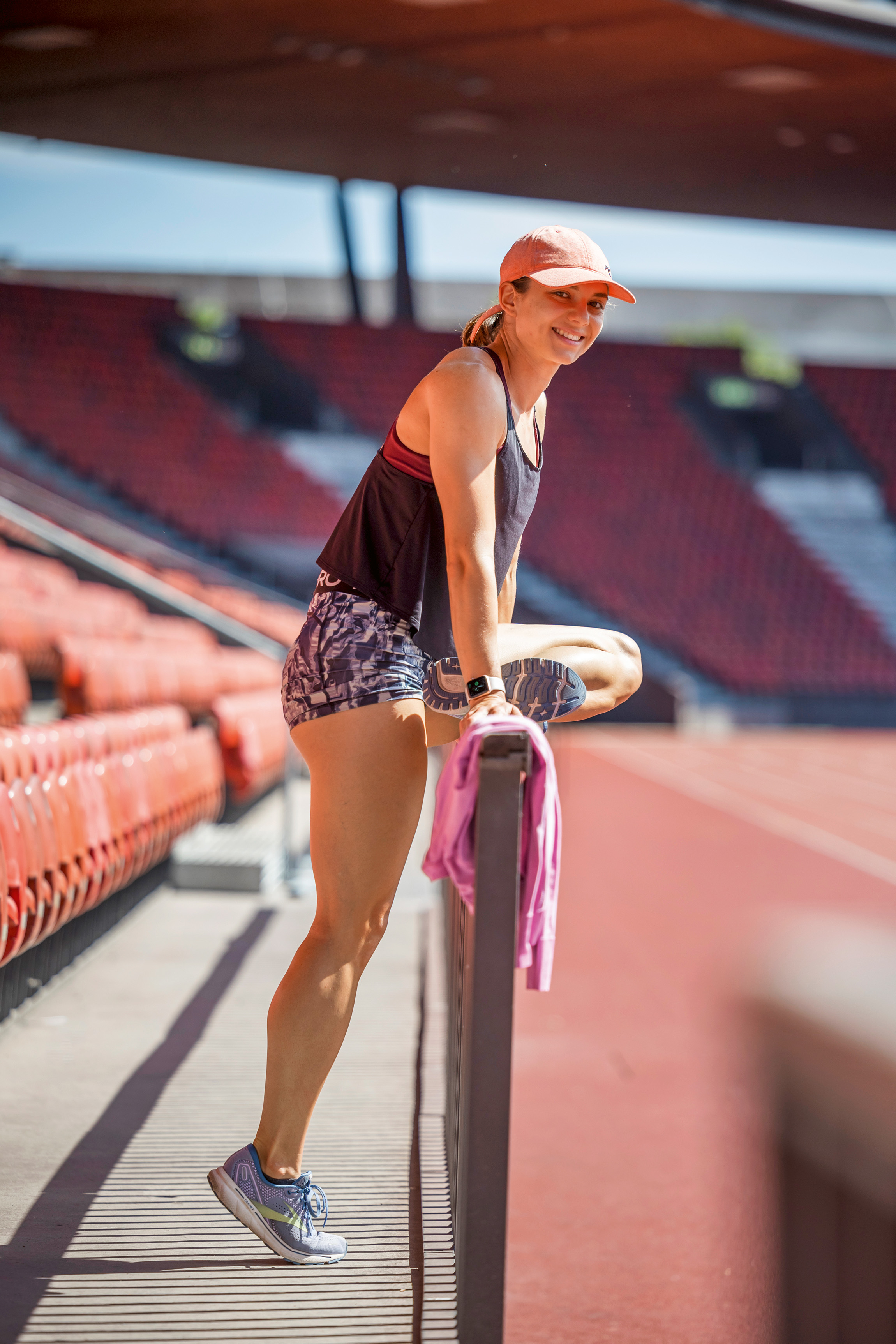
Technology meets sport
Down on the track, Spengler is fitting special insoles into Frey's running shoes. Developed by ETH biomechanics specialist Roland Zemp and his Lucerne-based start-up, they measure where pressure is applied during a sprint. Spengler also attaches a belt with two sensors to Frey's lower back to record the athlete's movements. "These tools help us analyse the running dynamics and other biomechanical data," Spengler explains. A camera in the Airshield records the athlete as she runs, while the sensors in the belt and insoles capture other parameters that are key for comparing sprints with and without the Airshield and with an elastic cord.
With her warm-up complete and the sensor belt and special insoles in place, Frey is finally ready for her first sprint of the day. This is the third time she has trained with the new equipment, following a break of several weeks. "It always takes a moment to regain the confidence that the Airshield will keep pace with me," she says. "But after that I can really push it, which is such a brilliant feeling!"
Géraldine Frey bursts into action. Her coach, Lucio di Tizio, roars with encouragement: "Go Géry! Come on!" After 70 metres, she reaches the finish line. Frey is delighted with her times. Overspeed training might only add a centimetre per step, she explains, but after 50 steps that's already half a metre. "Running without air drag is an incredible feeling. It's almost like flying," gushes Frey.






